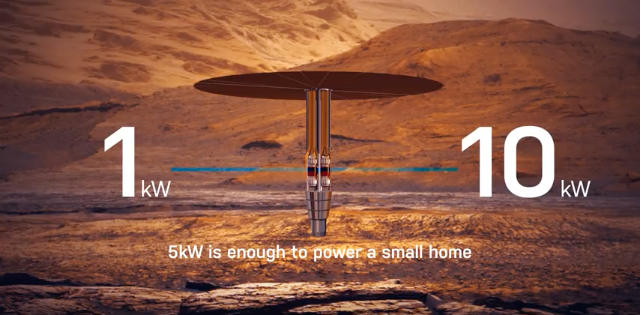NASA test-runs Kilopower, a nuclear reactor able to sustain a habitat on Mars

INQUIRER.net stock photo
There must be something gratifying if not romantic about flying to Mars. The late David Bowie sang about the red planet, wondering out loud if there is life out there. Science fiction writers Ray Bradbury and Alan Moore, on the other hand, entertained all the possibilities that could happen in the great, wide universe (or multiverses, if you preach Schrödinger), from a superhero building a glass castle on Mars to the invasion of Martians by humans in search of a new planet to call home.
But although living on Mars isn’t as feasible as sending a rocket ship full of astronauts willing to colonize Martians, scientists Patrick McClure and David Poston’s Kilopower project makes the question “Is there life on Mars?” not as farfetched.
The Kilopower is a small nuclear reactor designed at the Los Alamos National Laboratory in collaboration with the National Aeronautics and Space Administration, as per Space.com’s report last Jan. 18, in hopes that it will one day power a colony on Mars, the moon and beyond.
According to McClure and Poston, energy is needed to create a habitable environment on Mars, and just enough to get back to Earth. But for distant planets like Mars, it’s inefficient to bring such amount of fuel; it would be too heavy.
Kilopower, however, is lightweight enough to carry to Mars and powerful enough to power a Stirling engine. Its reactors range from 1 kilowatt to 10 kilowatts; about 40 kilowatts, or 4 to 5 Kilopowers are needed to sustain a habitat on Mars and create energy.

Image: Screengrab from YouTube/Los Alamos National Lab
Test runs of Kilopower have already culminated late last year at the Nevada National Security Site, and will build up to a test of a flight-like reactor core at full operating temperature this spring. As more tests of Kilopower are underway, other complex and technical factors are bound to come into play when it goes to sending humans to live on Mars.
Is there life on Mars? Perhaps the Kilopower may just one day answer the question.
The video of Los Alamos National Laboratory may be watched in full through this link: Powering a Habitat on Mars with Kilopower. Cody Cepeda/JB
RELATED STORIES:
Deep, buried glaciers spotted on Mars
NASA calls on everyone to send names to Mars, earn frequent flyer points